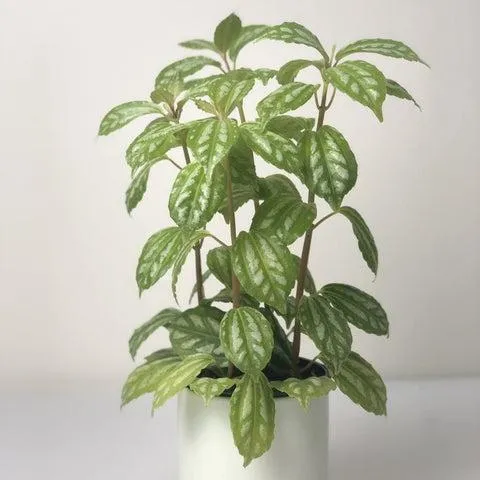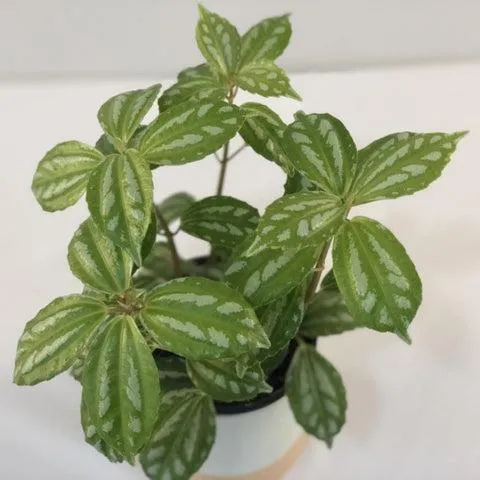Are Aluminum Plants Toxic to Dogs?
As a veterinarian with over 15 years of experience treating dogs, I’m often asked questions related to potential toxins in the home. One concern pet owners frequently have is whether aluminum plants could be harmful if ingested by their furry companions. In this article, I’ll address this question by exploring the different angles an interested user may have.
Is Aluminum Toxic to Dogs?
The short answer is that while aluminum itself is not highly toxic, in large doses it can potentially cause issues for dogs. Aluminum is a naturally occurring mineral that many animals are continuously exposed to in small amounts through their diet and environment. However, when too much accumulates in the body, it has been linked to health problems in some studies.
- The main risks from aluminum come from long-term accumulation rather than a single exposure.
- Symptoms of acute aluminum poisoning are rare but may include vomiting, diarrhea, lethargy and lack of appetite.
- Chronic elevated levels have been associated with neurological conditions in some animal studies, though a direct link has not been proven.
So in terms of plants, small bits chewed or ingested during play would not generally pose a threat on their own. But consuming large pieces of plant materials or succumbing to pica behavior with ongoing access could potentially lead to high intake over the long-run. Let’s examine some key factors in more depth.
Are All Parts of Aluminum Plants Equally Toxic?
Not necessarily. While all plant tissues will contain trace aluminum as part of their natural composition, the concentration can vary. In particular, the leaves tend to accumulate more aluminum than other parts when the plant is stressed or growing in high-aluminum soil. The roots also harbor aluminum to some degree.
Therefore, a curious dog nibbling on aesthetic flowers or thin stems is less risky than one aggressively chewing large portions of leaves or root bundles. Of course, the amount eaten also impacts the exposure level. So it’s best to minimize access to aluminum plant materials altogether if possible to reduce even small risks.
How Much Ingestion Poses a Threat?
Toxicologists have not established a definitive minimum risk level for aluminum toxicity in dogs as more research is still needed. However, here are some general guidelines based on studies:

- A single accidental exposure to a small fragment would not warrant emergency care in most healthy dogs.
- Continuous ingestion of high amounts over weeks or months, potentially totaling multiple grams of aluminum on a regular basis, could start raising concerns.
- Dogs that may be more susceptible owe to preexisting conditions may need to avoid even frequent low intakes as a precaution.
As with most toxic substances, individual susceptibility can vary greatly based on size, health, diet and many other factors. So it’s smart to minimize all non-food exposures if possible when children or pets may access the items. An ounce of prevention is worth a pound of cure, as they say!
Signs to Watch For
If your dog has been observed ingesting parts of an aluminum plant, it’s a decent idea to keep an eye out for any unusual symptoms for at least a few days:
- Vomiting or diarrhea
- Lethargy or depressed mood
- Loss of appetite
- Excessive drooling or panting
- Muscle tremors
- Seizures in severe cases
These signs could potentially indicate the dog is experiencing aluminum toxicity. Consult your vet right away if any concerning signs develops. And as always, save plant samples or packaging for proper identification if needed. Early medical intervention can help prevent long-term issues from progressing.
Real-Life Case Example
From my experience as a vet, I’ve seen a few cases that highlighted how individual susceptibility plays a key role. One that sticks in my mind involved a small terrier mix who had a noteworthy reaction after ingesting leaves and stems from a large dracaena plant. Within a few hours, he became lethargic, developed vomiting and diarrhea, and seemed disoriented.
Bloodwork revealed elevated aluminum levels, and we determined the amount consumed accounted for several times his body weight in plant material. Thankfully, supportive care helped him bounce back quickly. But it served as a cautionary tale – what didn’t faze a larger dog could impact a smaller framer more severely due to differences in metabolic rate and body size. Every patient is unique.
Ways to Dogproof Aluminum Plants
If you decide to keep aluminum foliage indoors, here are some tips to help minimize your dog’s access:

Relocate plants up high. Mount them on high shelves, tables or wall hangings that dogs can’t reach.
Use barriers. Place plants inside an enclosure such as a closet, baby gate or bench to block entry.
Trim foliage short. Prune long drooping leaves so there’s less to grab and chew.
Provide deterrents. Use sour-tasting pet-safe sprays on foliage to prevent nibbling behavior.
Monitor interactions closely. Don’t leave curious dogs unsupervised around plants until you’re 100% sure access is restricted.
Being proactive makes it easier to relax and enjoy your plants without constant worry. An ounce of prevention is worth a pound of dog-safe plants!

In conclusion, while aluminum toxicity is not an emergency concern for most casual exposures, there are certainly reasons pet parents may want to limit their dog’s access to ornamental aluminum plants long-term. With proper safeguards and monitoring, the aesthetic appeal can still be enjoyed indoors responsibly. But eliminating contact is always the surest way to remove even small risks if possible. As with most household dangers, awareness and prevention are key to keeping your curious canine companion healthy.
I hope this overview has helped address any concerns you may have had about aluminum plant safety. Please feel free to touch base if you have additional questions!
Aluminum Plant Toxicity Risks for Dogs
| Plant | Toxic Parts | Symptoms |
|---|---|---|
| Dieffenbachia | All parts | Mouth pain, vomiting, diarrhea |
| Peace Lily | All parts | Mouth pain, vomiting, diarrhea |
| Chinese Evergreen | All parts | Mouth pain, vomiting, diarrhea |
| Philodendron | All parts | Mouth pain, vomiting, diarrhea |
| Poinsettia | Leaves, stems | Mouth pain, vomiting, diarrhea |
FAQ
-
Are aluminum plants hazardous to dogs?
Yes, aluminum plants can be seriously bad for dogs. The various parts of aluminum plants – leaves, stems, seeds, roots – contain toxins which can cause harm if consumed.
-
What are the risks to dogs from aluminum plants?
There are a few key dangers. The leaves and other parts may cause stomach issues like vomiting or diarrhea if eaten. More worrying is that some toxins can harm the kidneys if a dog eats a large amount. In rare cases, there have been reports of kidney failure in dogs that got into aluminum plants. So it’s best to keep curious pups away!
-
What are some common aluminum plants?
Two of the most typical types found in homes are Chinese Evergreen and Peace Lily. You may also see Dracaena or Mother-in-Law’s Tongue plants classified as aluminum plants. These can all look enticing to dogs but should be placed up high or behind gates.
-
How can we prevent dogs from eating aluminum plants?
To stop your pooch from possibly munching on toxic leaves, you’ll want to put plants in spots that are difficult for dogs to reach – on high shelves, behind closed doors, or barrier them with baby gates. It’s also a good idea to do a home sweep and remove any dropped leaves right away before curious pups find them. With care, we can keep homes safe for both plants and pups!

-
What should we do if a dog eats an aluminum plant?
If you see your dog chomp down on leaves or flowers, don’t panic! First, contact your vet right away and let them know what type of plant was eaten in case treatment is needed. Secondly, it may help to induce vomiting to get any remaining pieces out of their belly. Hold off on that until calling the vet though. With any luck, a small amount won’t cause issues. But it’s always best to check in with a professional just in case.
-
Can specific aluminum plants be safer for dogs?
It seems some varieties produce fewer toxins and may cause less harm if consumed by dogs compared to others. Nevertheless, all aluminum plants must be considered hazardous. Honestly it’s best to simply keep them out of reach to avoid any risks. Who knows, maybe your pup has an iron gut – but it’s not worth finding out! Your dog’s safety comes first.
